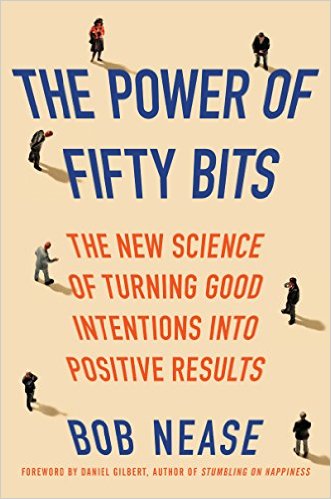Photo by Gage Skidmore, Flickr
Quiz time! I will give you a brief description of a movie; your job is to guess the movie. [1]
Movie A: A young man and woman from different social classes fall in love aboard an ill-fated voyage at sea.
Movie B: A Las Vegas-set comedy centered around three groomsmen who lose their about-to-be-wed buddy during their drunken misadventures, then must retrace their steps in order to find him.
Movie C: A 17th Century tale of adventure on the Caribbean Sea where the roguish yet charming Captain Jack Sparrow joins forces with a young blacksmith in a gallant attempt to rescue the Governor of England’s daughter and reclaim his ship.
If you said The Titanic, The Hangover, and Pirates of the Caribbean, you’re spot on!
Each of these short descriptions is called a log line. Log lines are important because they get to the gist of any narrative, and narratives are important because, well, that’s the way our brains work.
Listening to a story is more engaging that absorbing a long list of facts. And for the longest time, our ancestors had only one way to pass information across space and time: verbally. For whatever reason, stories work better.
Politicians have log lines too. Take a look at these, and see if you can identify the presidential candidate:
Candidate A: Well known, no-holds barred billionaire businessman takes on the biggest challenge of his career: navigating the land mines of a rigged political power system and out of control PC culture to make America great again.
Candidate B: Gruff, frumpy, independent senator from a tiny northeastern state takes a long-shot stand to lead a revolt against power players – from Manhattan’s Wall Street to DC’s Pennsylvania Avenue – and put government back in the hands of the little guy.
Candidate C: Seasoned stateswoman and ex-First Lady leverages her impressive intellect and hard-earned political savvy to expand her predecessor’s progressive agenda in the face of the country’s deep ideological divisions.
Candidate D: After leading a political revolution that results in the toppling of his own party’s leadership in Washington, a firebrand Senator from Texas promises to put an end to political compromise and backroom horse trading and return control of the government to the people, just as the founding fathers originally envisioned.
Trump, Sanders, Clinton, and Cruz… nicely done.
I realize that Ted Cruz’s departure from the Republican primary is now old news, and that every post mortem in this remarkable election cycle smacks of Monday morning quarterbacking. Still, there’s an important lesson to be learned from Cruz’s failure, both in politics specifically and in our lives more broadly.
To understand the Cruz meltdown, let’s start with his strategy to become the Republican nominee. Once it became clear that he wouldn’t get enough delegates to clinch the nomination before getting to the convention, the Cruz campaign crafted a two-step path to victory.
First, he worked hard to keep Trump from amassing enough bound delegates to win the nomination on the first vote at the convention. It was the pursuit of this strategy that led to recent the “divide and conquer” arrangement with John Kasich. (As I noted last week, this agreement required a level of mutual trust that neither side seemed to be able to muster.)
Second, Cruz would work the delegate process so that those bound to Trump on the first vote at the Republican convention would turn to him on subsequent votes. Until recently, many of us thought that delegates were simply assigned to candidates based on how each candidate performed in each state’s primary. That’s mostly true, but it turns out that delegates are rarely bound to a candidate past one or two rounds of voting at the convention. In short, in the case of a contested convention, whether individual delegates support you matter a heck of a lot more than how voters in the primaries that got those delegates to the convention actually voted.
Working the process to stack the delegate deck in a candidate’s favor takes a lot of boots-on-the-ground maneuvering and a deep understanding of little-known rules that vary widely from state to state. As US News & World Report put it,
“Cruz has parlayed his campaign’s organizational muscle and understanding of sometimes arcane GOP delegate selection rules to win significant blocs of delegates in various places including Colorado, Indiana, North Dakota and South Carolina.”
And as USA Today reported, Cruz’s efforts had been long underway:
“Placing people in states and U.S. territories; learning the often-arcane rules of delegation selection in different venues; making sure Cruz loyalists are at the right meetings and votes — the campaign has been planning these kinds of things for months, allies said.”
Successfully lining up the delegates needed to win a contested convention requires many of the things we admire in leaders: the foresight to see a problem early enough to address it, an ability to build a team with enough insight into the local situation to be effective, and deploying enough resources to maximize success in an uncertain and dynamic environment.
But all of this, as impressive as it was, undoubtedly contributed greatly to Cruz’s undoing. It was precisely his team’s success in using complicated rules, planned long in advance, and executed under the radar that did him in. That’s because all of those things fundamentally violate his own narrative. You just can’t be the firebrand outsider working to give government back to the people and get there by masterfully using a complex political system to bypass voters, nearly all of whom were surprised to learn such a system even existed.
When listening to any story, most people are at least willing to suspend some degree of disbelief. We do it when we go to the movies, watch a TV show, or read fiction. But that willingness evaporates when a story becomes internally inconsistent. In the case of the Cruz campaign, it’s not that it’s hypocritical – although there’s that too – it’s that the narrative stops being an engaging story and instead becomes flat out incredible, not to be believed.
Ironically, it’s probably Trump’s log line that would have better tolerated the backroom dealing needed to line up delegates for a contested convention. Players play, winners win, and that sort of thing.
The need to stay consistent with your narrative holds true well beyond politics. It’s not only critical for your organization to have a mission statement. You need a narrative that helps get your team from where you are today to where that mission statement says you want to be… and it needs to do it in a manner that’s absolutely 100% consistent.
Here’s an example. When I was the chief scientist at Express Scripts, everyone in the company knew that our mission was “to make the use of prescription medications safer and more affordable.” But how we got there was just as important: we embraced a business model of alignment, working to ensure that the company made money when our clients and patients saved money. We had a powerful, lasting narrative because we had an admirable mission and a business model that kept us pointed in the right direction.
What’s your narrative? And how can you ensure that you remain internally consistent with the story you’re telling?
[1] The movie log lines came from Gabe Maura and Jonathan Triesman.




